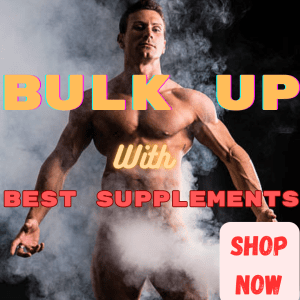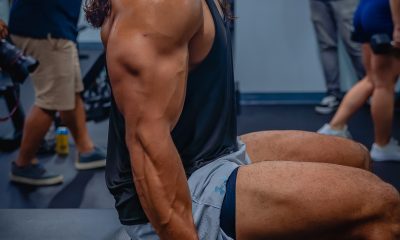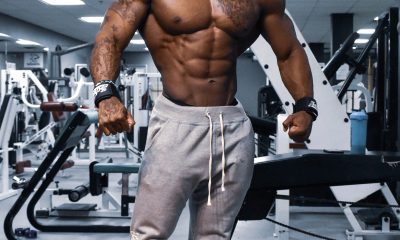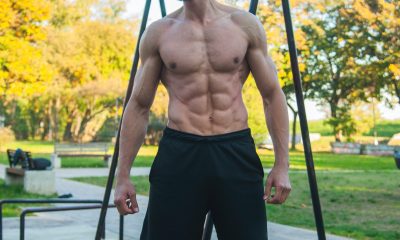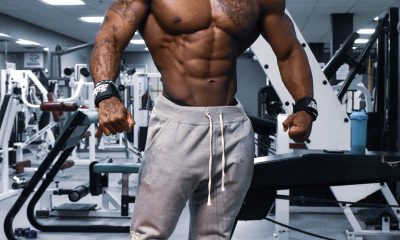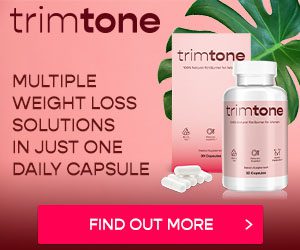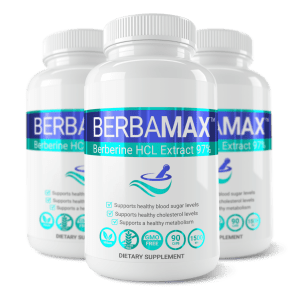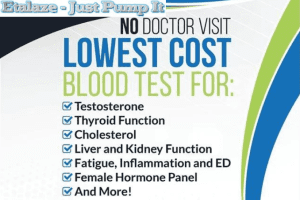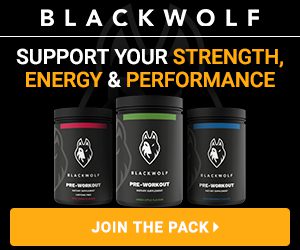Steroids
Hollywood Actors On Steroids And Those Who Don’t Use
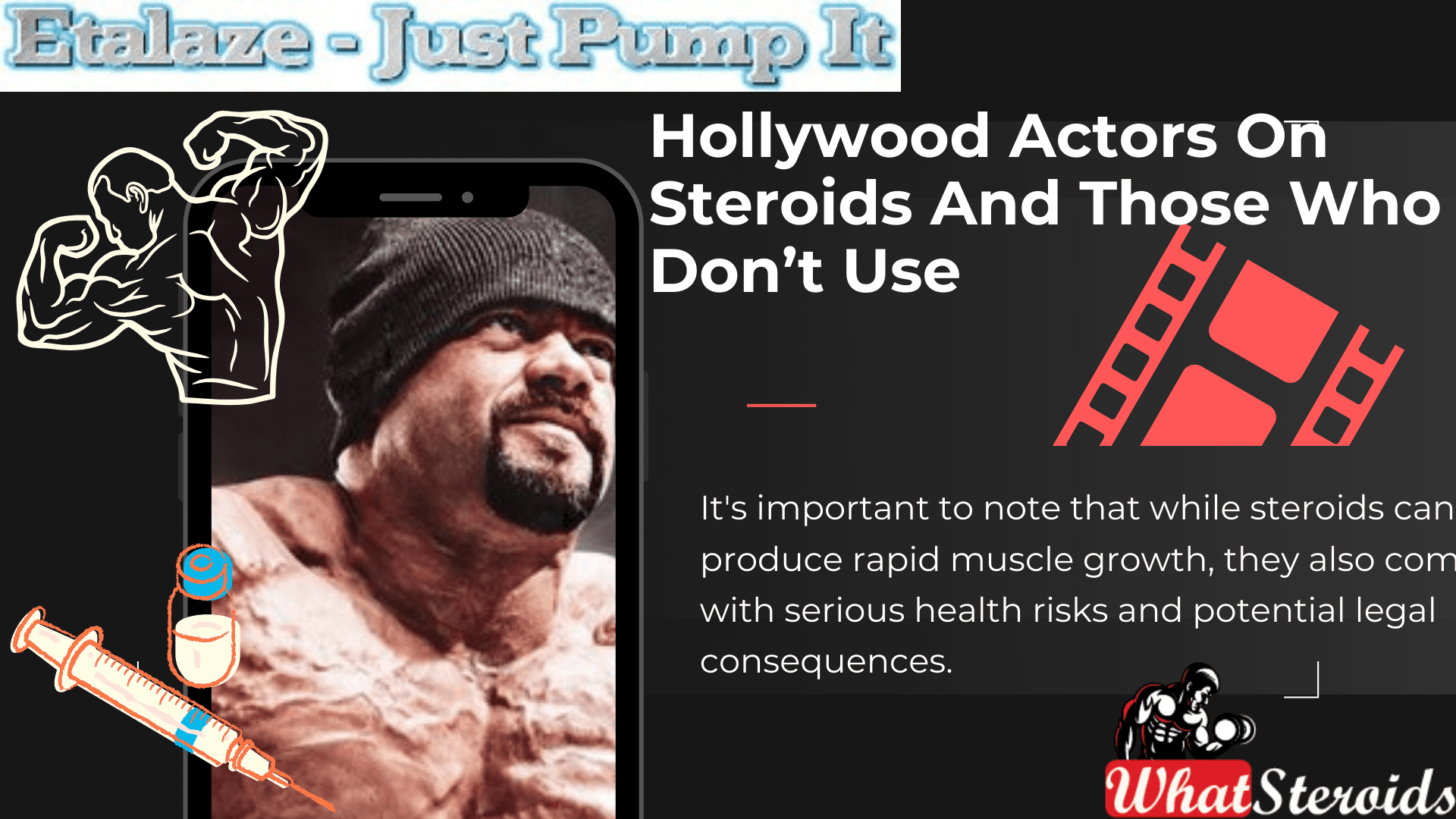
In this century where there is competition everywhere, everyone wants to look and do better from others. The media is also occupied by such competitors who are putting all their efforts to create an ideal image on the screen and win the race of television. In this article, we are going to explore Hollywood Actors On Steroids, or who are thought to be using PEDs.
Why Hollywood Actors Resort to Steroid Use
There are several reasons why some Hollywood actors might turn to steroids for bodybuilding:
Pressure to achieve a certain physique
Hollywood often sets unrealistic standards for physical appearance, leading actors to resort to steroids to rapidly bulk up or get lean.
Competitive edge
In a competitive industry, actors may feel the need to stand out physically, especially for action roles or superhero movies where a muscular physique is often required.
Time constraints
Film schedules can be demanding, leaving little time for natural muscle growth through conventional means like diet and exercise. Steroids offer a quicker route to achieving desired results.
Influence of peers
Some actors may be influenced by others in the industry who use steroids, whether it's to gain muscle mass or maintain a certain physique.
Perception of masculinity
In a culture that often equates muscularity with masculinity, actors may feel pressured to enhance their physique using steroids to conform to societal norms.
The increasing prevalence of anabolic steroid use within the film industry raises significant concerns on multiple fronts. Firstly, there's a profound worry about the health risks associated with these substances. Anabolic steroids can trigger a range of adverse effects, both in the short term and over prolonged periods. These include cardiovascular problems, liver damage, hormonal imbalances, and even psychological issues.
The normalization of steroid use among influential figures within Hollywood, such as actors, directors, or producers, can inadvertently endorse drug consumption and create a culture where it's perceived as necessary or even desirable to achieve certain physical standards.
Must Read Our Article: Top 30 Steroids Shop Reviews
With their apparent benefits, they have some worse side effects to like:
- Destroying brain cells
- Depression, mood swings and nausea
- Weak immunity system
- High blood pressure and other heart diseases
- Injected steroids cause Hepatitis B, C, and HIV
- Liver Cancer
- Water retention
- Infertility
Some side effects that can disturb your appearance are:
- Hair loss
- Severe acne
- Excessive hair growth on unwanted parts of females
- A heavy chest of men
Who Can Use or Already Use Steroids?
Although there are many disadvantaged people ought to use it even if they are available at higher prices in the market. The most common demand for steroids is a sports arena, where sportsman are addicted to having them. They use it to have a better performance in their games.
All those bodybuilders that we see are not natural! They also use steroids in the vast amount to have a lean muscle and a good physique. Most importantly, the people we get inspired by seeing them on our screens are also not the natural ones.
They use steroids for the body transformations required for their respective roles. So most of it we see and get amazed from on our television sets is not the natural thing.
Click on the Banner Below to get Best Steroids Legally:

Hollywood Stars Using Steroids:
Hollywood a vast media field and all the actors and actresses belonging to Hollywood that we idealize are as beautiful as anything. Millions of dollars are spent on many stars every year so that they can have the perfect body, flawless skin, and better energy to perform the acts.
The audience not knowing the details assume that these fantastic stars are as real as anything and gets inspired by them. Steroids are one of those drugs used most of the stars to get themselves ready for their roles.
Must Read: 10 Examples of Hollywood Stars Steroid Transformation
Here are some of the Hollywood stars that use it for their bodies’ transformations:
1. Sylvester Stallone:
The famous old star is found to be a steroid user when he was charged in guilty while taking 40 doses of a Chinese steroid at US airport. Although he was a bodybuilder in the race of being perfect, he had taken steroids and never admitted.

2. Dwayne Johnson:
The heartthrob of many girls, The Rock is also on steroids, and no one could even argue about that. Those perfectly shaped muscles and a jaw-dropping physique will make you love him more, but all of this is not natural.
3. Jeremy Jackson:
Jeremy Jackson, who was a teenage star in a television show Baywatch that was a hit, is also condemned of using steroids. He confessed in his interview that he had spent almost $200,000 in a period of 3 years on steroids to have a body like Sylvester Stallone. He added that although he tried everything from diet to trainers, he wants a massive collection as early as possible so opted to go on steroids.
4. Scott Siegel:
The enormous star of The Wrestler and Orange Is the New Black is also found to be addicted to steroids. He admitted in an interview that he uses steroids to earn fame in the industry and he loves doing that. Not only the health destruction steroids can also cause you legal punishments. Scott is condemned for 4 years for selling out steroids.
5. Nick Nolte:
Steroids are not limited to the body growing purpose but to the anti-aging purpose too. The famous actor Nick Nolte admits using anti-aging steroids and not only this he promotes the use of such age resisting steroids openly.
6. Mickey Rourke:
Another renowned star of The Wrestler movie admits of using steroids for his sole purpose. Mickey Rourke was a wrestler too in his real life and had a magnificent massive body, but when this role was offered to him, he was in his 50’s and due to his age can’t buff up his body like previously so he chooses steroids to do it for him.
Hollywood Stars NOT Using Steroids:
With evil, there comes well also, with a night there is day also. Same goes for the super-stars in the same Hollywood industry who have never used steroids to go on television.
These stars were also offered roles which require vast massive body and a perfect manly physique, but they prefer going with the flow.
Keeping it all-natural, they did hard work, protein diets, and workouts, and with the help of best trainers.
1. Henry Cavill:
The superhero from Superman was a natural builder. The filmmakers wanted Henry to be in the best shape for this movie, and he achieved it by constant hard work and 4 months of training with Mark Twight.
2. Gerard Butler:
Another client to Mark Twight for the movie 300, Gerad Butler put all his effort with the help of his trainer to get the required shape for the film. Once he had it all, he used his broad chest to acquire other roles too.
3. Christian Bale:
The star from Batman Begins is usually thought to be on steroids after having a massive body in the movie. But the truth is he has been on a strict diet with an apple and a glass of tuna daily. A schedule of six days at the gym helps him to transform without any steroids.
4. Mark Wahlberg:
The superstar from the movie Pain and Gain has all done it naturally with his constant hard work. He had taken all those eateries 12 times a day that will help him to get in perfect shape. He also did a workout but at home.
So as a matter of fact, having the best physique is not always unnatural and unhealthy. It can attain through a proper natural way that will make you fit in the long run. Fame and money versed with Health, and in this completion, Health must win.
Overall
Anabolic Steroids
Anavar Cycle for Men and Women
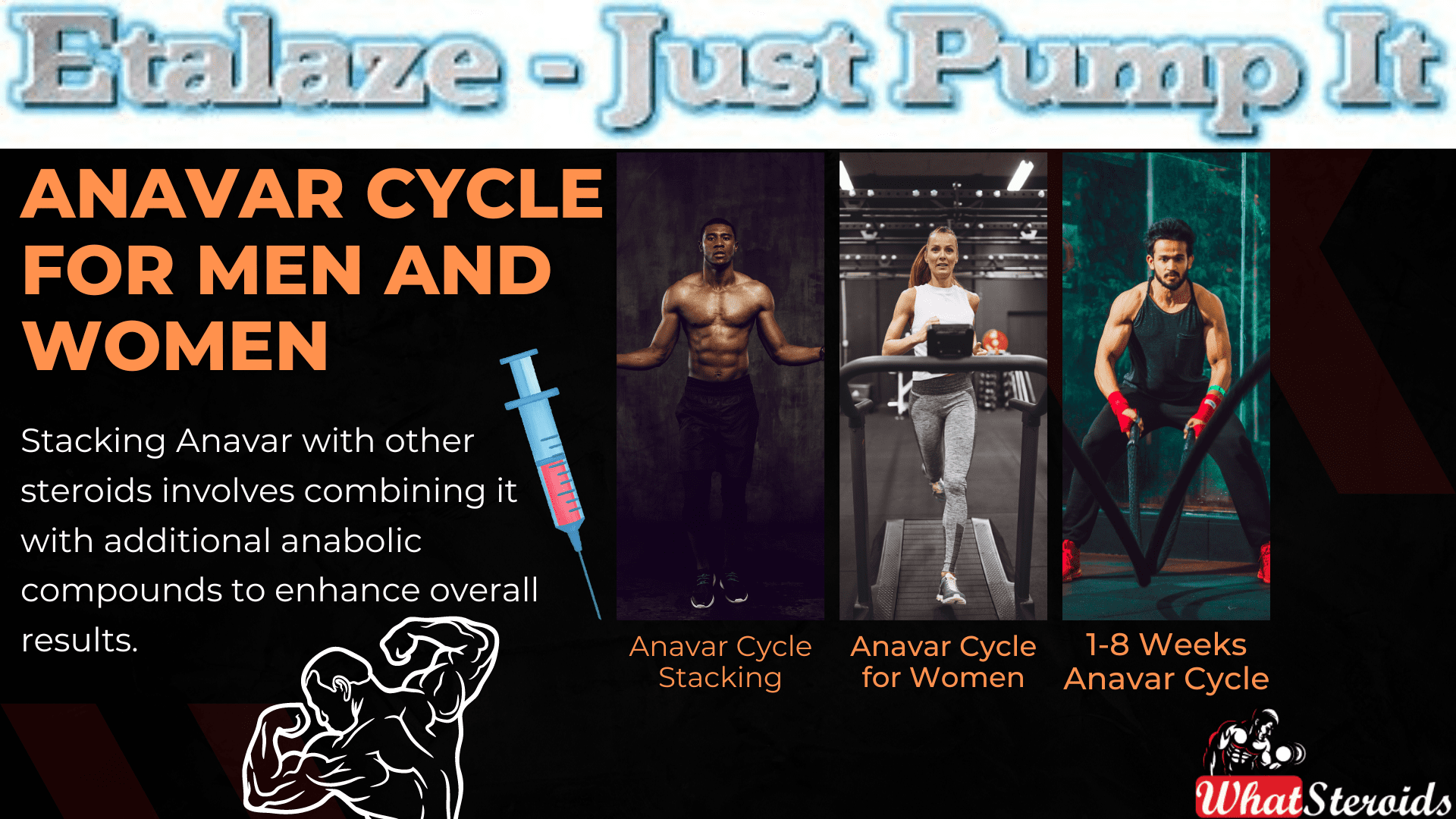
Anavar (Oxandrolone) is a mild anabolic steroid often used for cutting purposes. We shall explore the Anavar cycle in this article.
Anavar Overview
Anavar (Oxandrolone) is an oral anabolic steroid initially developed in 1962 to promote lean muscle mass in individuals suffering from muscle-wasting conditions.
Its formulation aimed to create a mild drug with minimal side effects, making it safe for both women and children. Anavar was successfully used to treat catabolic illnesses, burns, infections, and post-surgery recovery. It also helped increase bone mineral density in osteoporosis patients.
Mechanism of Action
Mimics Testosterone: Anavar functions by mimicking the effects of testosterone, a hormone crucial for muscle growth and repair.
Anabolic Processes: It promotes anabolic processes in the body, aiding in protein synthesis—essential for muscle development and maintenance.
Nitrogen Retention: Anavar helps muscle cells retain more nitrogen, a building block of protein.
Increased Oxygenation: By increasing the number of red blood cells, Anavar enhances oxygenation of muscles, leading to improved strength and endurance.
Must Read: Top 10 Legal Steroids Products And Brands On The Market
1-8 Weeks Anavar Cycle
Let’s break down the Anavar cycle dosages for both men and women from week 1 to week 8:
Anavar Cycle for Men
-
- Week 1-2:
- Start with 10mg per day.
- Week 3-4:
- Increase to 20mg per day.
- Week 5-6:
- Raise to 30mg per day.
- Week 7-8:
- Maintain at 30-40mg per day.
- Week 1-2:
Anavar Cycle for Women
-
- Week 1-2:
- Begin with 2.5mg per day.
- Week 3-4:
- Gradually increase to 5mg per day.
- Week 5-6:
- Continue at 5-10mg per day.
- Week 7-8:
- Maintain at 10mg per day.
- Week 1-2:
Remember to monitor your progress, stay within safe limits, and consult a healthcare professional throughout your cycle. Safety first!
Tips to Optimize Results During Anavar Cycle
Optimizing your Anavar cycle involves strategic planning, adherence to best practices, and a focus on safety. Let’s explore key aspects to enhance your results:
-
Set Clear Goals
- Define your objectives: Are you aiming for fat loss, muscle gain, or strength improvement?
- Knowing your goals helps tailor your Anavar cycle accordingly.
-
Dosage and Duration
- Cycle Length: Anavar cycles typically last 5 to 8 weeks.
- Dosage: Start with a low dose (e.g., 10 mg/day for beginners) and gradually increase if needed.
- Split Doses: Divide daily dosage into 2 to 4 doses for consistent blood levels.
-
Diet and Nutrition
- Caloric Intake: Anavar is effective during cutting phases. Maintain a slight caloric deficit for fat loss.
- Protein: Consume adequate protein to support muscle preservation and growth.
- Healthy Fats: Include healthy fats for overall well-being.
-
Training Regimen
- Resistance Training: Focus on compound exercises (squats, deadlifts, bench press) to stimulate muscle growth.
- Progressive Overload: Gradually increase weights and intensity to challenge your muscles.
-
Cardiovascular Exercise
- HIIT (High-Intensity Interval Training): Incorporate HIIT sessions for fat burning.
- Steady-State Cardio: Longer sessions at moderate intensity can complement your routine.
-
Supplements
- Creatine: Enhances strength and performance.
- Fish Oil: Supports overall health and joint function.
- Multivitamins: Fill nutritional gaps.
-
Post-Cycle Therapy (PCT)
- Anavar is mild, but PCT helps restore natural testosterone production.
- Consider Clomid (Clomiphene) or Nolvadex (Tamoxifen) for PCT.
-
Monitor Side Effects
- Anavar has minimal side effects, but be vigilant.
- Liver Health: Use liver support supplements (e.g., milk thistle).
- Cholesterol: Monitor lipid levels.
-
Hydration and Rest
- Stay hydrated for optimal performance.
- Prioritize sleep and recovery.
-
Consult a Professional
- Always consult a healthcare provider or fitness expert before starting any cycle.
- Individualized advice ensures safety and effectiveness.
Anavar Cycle Stacking
Stacking Anavar with other steroids involves combining it with additional anabolic compounds to enhance overall results. Let’s explore the concept of stacking and some popular Anavar stacks.
Related Article: Best Steroids for People in Their 50s
Anavar and Testosterone Stack
Purpose: This combination capitalizes on the well-tolerated nature of both steroids.
Benefits:
Muscle Gains: Users have reported 25–30 pounds of muscle gains when taken in moderate dosages.
Fat Loss: Testosterone speeds up subcutaneous fat loss.
Considerations:
Aromatization: Testosterone aromatizes, leading to temporary water weight gain.
Injection vs. Oral: Testosterone is injectable, while Anavar is oral.
Not Suitable for Women: Due to potential virilization effects.
Anavar and Winstrol Stack
For Men:
Lean Look: Anavar’s dry effect combines well with Winstrol’s hardness.
Strength and Vascularity: Users experience enhanced strength and vascularity.
For Women:
Lean Muscle: Anavar and Winstrol together promote lean muscle gains.
Caution: Monitor side effects carefully.
Anavar and Clenbuterol Stack:
For Men:
Fat Loss: Clenbuterol accelerates fat burning.
Anabolic Boost: Anavar complements Clenbuterol’s effects.
For Women:
Lean Physique: This stack helps achieve a lean, toned appearance.
Cautious Dosage: Start with low doses.
Anavar and Trenbolone Stack
Advanced Stack: Trenbolone is potent and not recommended for beginners.
Benefits:
Muscle Hardness: Trenbolone enhances muscle density.
Strength: Combined effects lead to significant strength gains.
Caution: Monitor side effects closely.
Anavar and Dianabol Stack
Purpose: Combining an oral steroid (Dianabol) with Anavar.
Benefits:
Synergy: Dianabol boosts initial gains, while Anavar maintains quality muscle.
Strength and Size: Users experience rapid strength and size improvements.
Considerations:
Liver Health: Both are hepatotoxic, so monitor liver function1.
Stacking should be done cautiously, considering individual goals, tolerance, and safety. Always consult a healthcare professional before combining any steroids.
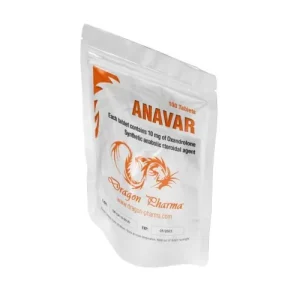 Click here to buy Anavar 10 mg by Dragon Pharma
Click here to buy Anavar 10 mg by Dragon Pharma
Top Anavar Benefits
Anavar (Oxandrolone) offers a range of benefits for both men and women in bodybuilding. Let’s explore them here.
Increased Lean Muscle Mass
Anavar helps build lean muscle tissue, contributing to a more defined physique.
Fat Loss
It promotes fat burning while preserving muscle, making it ideal for cutting phases.
Enhanced Strength
Users experience improved strength levels during workouts.
Minimal Water Retention
Unlike some steroids, Anavar doesn’t cause excessive water retention.
Improved Endurance
Anavar enhances stamina, allowing longer and more intense training sessions.
Vascularity
Users often notice increased vascularity and muscle pumps.
Safe for Women
Anavar is one of the few steroids safe for female use.
Positive Impact on Strength
Strongmen and powerlifters also benefit from Anavar.
Low Risk of Side Effects
Anavar is well-tolerated and doesn’t produce harsh effects.
Muscle Hardening
It contributes to a harder, more defined appearance.
Explore: Aromasin Nolvadex PCT
Preservation of Muscle During Caloric Deficits
Crucial for maintaining gains during cutting.
Improved Recovery
Anavar aids post-workout recovery.
Boosted Nitrogen Retention
Essential for muscle protein synthesis.
Enhanced Athletic Performance
Anavar helps athletes perform at their best.
Increased Metabolic Rate
Supports fat loss.
Positive Impact on Bone Density
Beneficial for overall health.
No Aromatization
Anavar doesn’t convert to estrogen.
Suitable for Older Adults
Helps combat muscle loss due to aging.
Minimal Androgenic Effects
Reduces risk of virilization in women.
Quality Gains
Anavar promotes high-quality muscle growth.
Potential Side Effects Associated With Anavar
Anavar (Oxandrolone), while considered relatively safe, does come with potential risks. Let’s explore these risks in detail:
Cholesterol
Anavar can impact cholesterol levels.
It may raise LDL (bad) cholesterol and lower HDL (good) cholesterol.
Regular monitoring is essential.
Liver Toxicity
Prolonged use of Anavar can harm the liver.
Liver enzymes may increase.
Avoid alcohol and other hepatotoxic substances.
Testosterone Suppression
Anavar can suppress natural testosterone production.
Post-cycle therapy (PCT) helps restore hormonal balance.
Excessive Pumps
Anavar can cause intense muscle pumps during workouts.
Manage this by adjusting training intensity.
Kidney Toxicity
High doses or prolonged use may harm the kidneys.
Stay hydrated and monitor kidney function.
Virilization (in Women)
While Anavar is safer for women, excessive dosages can lead to masculinization.
Watch for signs like deepening voice, facial hair growth, and clitoral enlargement.
Take Away
Obtaining genuine pharmaceutical-grade Anavar has become increasingly challenging through legitimate channels.
However, Anvarol from Etalaze.to or CrazyBulk provides impressive muscle benefits without the legal risks or health hazards associated with illegal products.
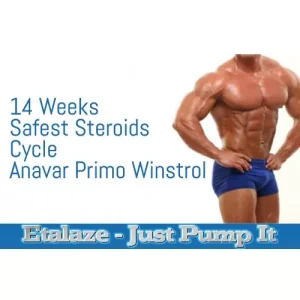 Click here to buy 14 Weeks Safest Steroids Cycle - Anavar Primo Winstrol
Click here to buy 14 Weeks Safest Steroids Cycle - Anavar Primo Winstrol
Anavar, especially from Etalaze delivers steroid-like results safely, legally, and without requiring a prescription. Good luck in your next anavar cycle!
Bodybuilding Products
Telmisartan In Bodybuilding: An Expert’s Advice
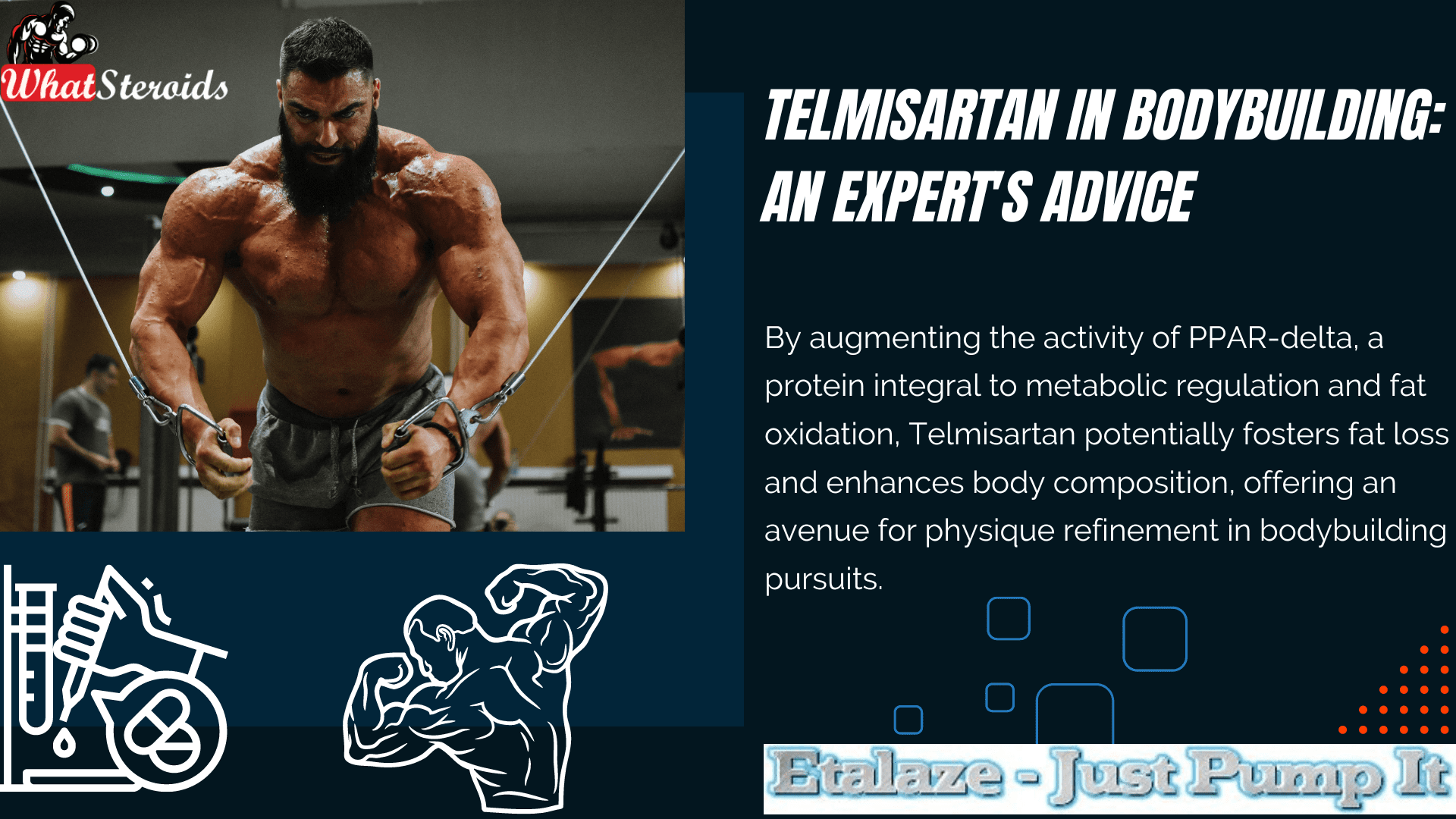
Telmisartan is a medication primarily used in medical circles to treat hypertension, also known as high blood pressure. It belongs to a class of drugs called angiotensin II receptor blockers (ARBs). The drug has piqued the interest of bodybuilders due to its potential benefits beyond blood pressure management.
Mechanism of Action
Telmisartan works by blocking the action of angiotensin II, a substance in the body that causes blood vessels to constrict, thereby reducing blood pressure. By blocking angiotensin II receptors, telmisartan dilates blood vessels, allowing blood to flow more smoothly.
Medical Application of Telmisartan
Treatment of Hypertension
Hypertension is a common medical condition characterized by elevated blood pressure levels. It is a significant risk factor for various cardiovascular diseases, including heart attack and stroke. The drug is prescribed to patients with hypertension to help lower their blood pressure and reduce the risk of associated complications.
Cardiovascular Protection
Telmisartan not only helps lower blood pressure but also provides cardiovascular protection. It has been shown to reduce the risk of heart attack, stroke, and other cardiovascular events in patients with hypertension or other cardiovascular risk factors.
Diabetic Nephropathy
In addition to treating hypertension, telmisartan is also used in the management of diabetic nephropathy, a type of kidney disease that occurs in people with diabetes. It helps slow down the progression of kidney damage in diabetic patients by reducing blood pressure and protecting the kidneys from further damage.
Heart Failure
Telmisartan may also be prescribed in the treatment of heart failure, a condition in which the heart is unable to pump blood effectively to meet the body's needs. It can help improve symptoms, reduce hospitalizations, and increase survival rates in patients with heart failure, particularly those who cannot tolerate other medications such as ACE inhibitors.
Combination Therapy
The drug is sometimes used in combination with other antihypertensive medications, such as diuretics or calcium channel blockers, to achieve better blood pressure control. Combination therapy is often recommended when blood pressure is difficult to control with a single medication alone.
Read More: 12 Muscle Supplements that a Skinny Guy Should Take
Long-Lasting Effects
One notable feature of telmisartan is its long duration of action, with a half-life of around 24 hours. This means that it can be taken once daily, making it convenient for patients and potentially improving medication adherence.
Telmisartan Use In Bodybuilding
The use of Telmisartan within bodybuilding holds multifaceted advantages. Its diverse benefits offer significant potential for bodybuilders seeking enhanced performance.
Initially, the antihypertensive attributes of The drug serve as a vital adjunct in managing and preventing elevated blood pressure induced by AAS (Anabolic Androgenic Steroids). Additionally, Telmisartan exhibits efficacy in mitigating cardiac hypertrophy, particularly left ventricular hypertrophy, a prevalent concern among enhanced bodybuilders, which is often linked to premature mortality.
Moreover, Telmisartan's favorable impact on insulin sensitivity presents a counterbalance against the insulin resistance commonly associated with substances like MK-677, GH, and GH-releasing peptides.
Furthermore, Telmisartan demonstrates anti-inflammatory properties, facilitating a reduction in C-Reactive Protein levels, thereby addressing a significant factor in cardiovascular disease risk among bodybuilders.
Yet, the scope of Telmisartan's benefits extends further. By augmenting the activity of PPAR-delta, a protein integral to metabolic regulation and fat oxidation, Telmisartan potentially fosters fat loss and enhances body composition, offering an avenue for physique refinement in bodybuilding pursuits.
Here a few take aways on the application of the drug in bodybuilding:
Increased Endurance
Some users claim that Telmisartan enhances endurance levels.
Athletes may experience longer and more intense workout sessions without premature fatigue.
Improved Muscle Recovery
Telmisartan’s positive impact on blood flow may aid in post-workout muscle recovery.
It delivers essential nutrients and oxygen to muscles more efficiently.
Anti-Inflammatory Effects
The medication’s anti-inflammatory properties could reduce exercise-induced muscle soreness and inflammation.
Faster recovery between training sessions may be possible.
Fat Loss
Anecdotal reports suggest that Telmisartan may promote fat loss.
It could enhance the body’s ability to burn stored fat.
Muscle Hypertrophy
Some users speculate that Telmisartan might positively influence muscle growth.
This could be attributed to its impact on blood flow and nutrient delivery to muscle tissues.
Optimal Dosage for Bodybuilders
While Telmisartan is prescribed for specific medical conditions at varying dosages, the dosage used by bodybuilders may differ.
Scientific literature on Telmisartan’s direct impact on bodybuilding is limited.
Most information is based on user experiences and anecdotal evidence.
Generally, dosages for bodybuilders range from 20 to 80 milligrams (mg) per day, with some users dividing the daily intake into two doses.
Telmisartan Side Effects and Precautions
Telmisartan, like any medication, can have side effects and precautions that users should be aware of.
Side Effects
Dizziness or lightheadedness: The drug can cause dizziness or a feeling of faintness, especially when rising from a sitting or lying position.
Hypotension: Some individuals may experience a significant drop in blood pressure, leading to symptoms such as weakness, fatigue, or fainting.
Hyperkalemia: Telmisartan may lead to elevated levels of potassium in the blood, which can cause symptoms like muscle weakness, irregular heartbeat, or tingling sensations.
Fatigue: Feeling tired or lethargic is a common side effect of Telmisartan.
Headache: Some users may experience headaches as a side effect of the medication.
Diarrhea: Telmisartan can occasionally cause diarrhea or other gastrointestinal disturbances.
Back pain: Back pain has been reported as a side effect in some individuals taking Telmisartan.
Upper respiratory tract infection: Users may experience symptoms of a cold or flu-like illness.
Sinusitis: Inflammation of the sinuses may occur in some individuals.
Muscle cramps: Telmisartan can sometimes cause muscle cramps or spasms.
Allergic reactions: Rarely, individuals may experience allergic reactions such as rash, itching, swelling, or difficulty breathing.
Precautions
Pregnancy: Telmisartan should not be used during pregnancy due to the risk of harm to the fetus.
Breastfeeding: It is not recommended to use Telmisartan while breastfeeding, as it may pass into breast milk and harm the nursing infant.
Kidney disease: Caution should be exercised in individuals with kidney disease, as Telmisartan can affect kidney function.
Liver disease: Patients with liver impairment may require dose adjustments or close monitoring while taking Telmisartan.
Heart conditions: Individuals with heart disease, heart failure, or a history of heart attacks should use Telmisartan with caution under the supervision of a healthcare professional.
Diabetes: Telmisartan may affect blood sugar levels, requiring adjustments in diabetes medications.
Salt/volume depletion: Telmisartan may cause excessive lowering of blood pressure in individuals with salt or volume depletion.
Hyperkalemia: Patients with conditions predisposing them to hyperkalemia should be closely monitored while taking Telmisartan.
Renal artery stenosis: Telmisartan may exacerbate renal artery stenosis, a narrowing of the arteries that supply blood to the kidneys.
Dual blockade of the renin-angiotensin system: Concurrent use of Telmisartan with other medications that affect the renin-angiotensin system may increase the risk of hypotension, hyperkalemia, and renal impairment.
Driving and operating machinery: The drug may cause dizziness or fatigue, which can impair the ability to drive or operate machinery.
Where to Buy Telmisartan Online
Telmisartan is available through various channels. Here are some options for obtaining Telmisartan:
Local Pharmacies
You can visit local pharmacies such as Walgreens, CVS Pharmacy, Walmart, Harris Teeter, or Target (CVS). Prices may vary, but the drug typically starts at $10.751.
Some pharmacies offer home delivery services, allowing you to order online and have the medication delivered to your doorstep.
Online Prescription Services
Sesame: You can book a same-day video appointment with a healthcare provider on Sesame. They can write a prescription for Telmisartan, and you can pick it up at a local pharmacy.
Push Health: While Telmisartan is a prescription medication, you can consult with a medical provider online through Push Health to obtain a prescription.
Related Article: 6 Best Ways to Verify If a Steroid is Fake
Online Pharmacies
BuyMicardPl: This online platform offers Telmisartan (generic Micardis) without a prescription4.
PharmacyPortal: Check their catalog for Telmisartan availability.
Always consult with a healthcare professional before starting any new medication, especially if you have specific health conditions or are taking other medications. They can guide you on the appropriate dosage and monitor your progress.
Telmisartan Alternatives
While The drug has gained attention among bodybuilders, it’s essential to explore alternative options. Here are some medications that may have similar effects or benefits:
Lisinopril (Prinivil, Zestril)
An angiotensin-converting enzyme (ACE) inhibitor, lisinopril helps lower blood pressure and may have a calming effect on nerves and the heart12. It’s commonly used for hypertension.
Losartan (Cozaar)
Another angiotensin II receptor blocker (ARB) like Telmisartan, losartan can help manage blood pressure and has potential benefits beyond that3.
Olmesartan (Benicar)
Also an ARB, olmesartan is used for hypertension and may have similar effects on blood flow and muscle recovery4.
Valsartan (Diovan)
Yet another ARB, valsartan is prescribed for high blood pressure and could be considered as an alternative4.
Metoprolol (Lopressor)
A beta-blocker, metoprolol can reduce heart rate and blood pressure. It’s sometimes used off-label for social anxiety and movement disorders52.
Propranolol (Inderal)
Another beta-blocker, propranolol may help with anxiety and tremors. It’s used in various contexts, including performance anxiety5.
Candesartan
An ARB similar to Telmisartan, candesartan may have comparable effects on blood pressure and muscle function.
Irbesartan
Yet another ARB, irbesartan could be considered as an alternative for bodybuilders.
Fosinopril
An ACE inhibitor, fosinopril might have similar effects on blood pressure and overall health.
Nebivolol
A unique beta-blocker with vasodilating properties, nebivolol could be explored as an alternative2.
Overall
In conclusion, while some individuals may speculate about the potential benefits of Telmisartan in bodybuilding due to its purported effects on blood pressure regulation and muscle function, it's essential to emphasize that using Telmisartan for bodybuilding purposes is not medically advised or supported.
Telmisartan is a medication prescribed for managing high blood pressure and reducing the risk of cardiovascular events, and its off-label use for bodybuilding carries significant risks and potential side effects. Engaging in such usage without medical supervision can lead to adverse health outcomes and complications.
Therefore, individuals interested in bodybuilding should prioritize safe and evidence-based approaches, consulting with healthcare professionals and adhering to established guidelines for training, nutrition, and supplementation.
Must Read: Tren Cycle for Beginners
Bodybuilding
Is My Gear Bunk? How to Deal With Underwhelming Results
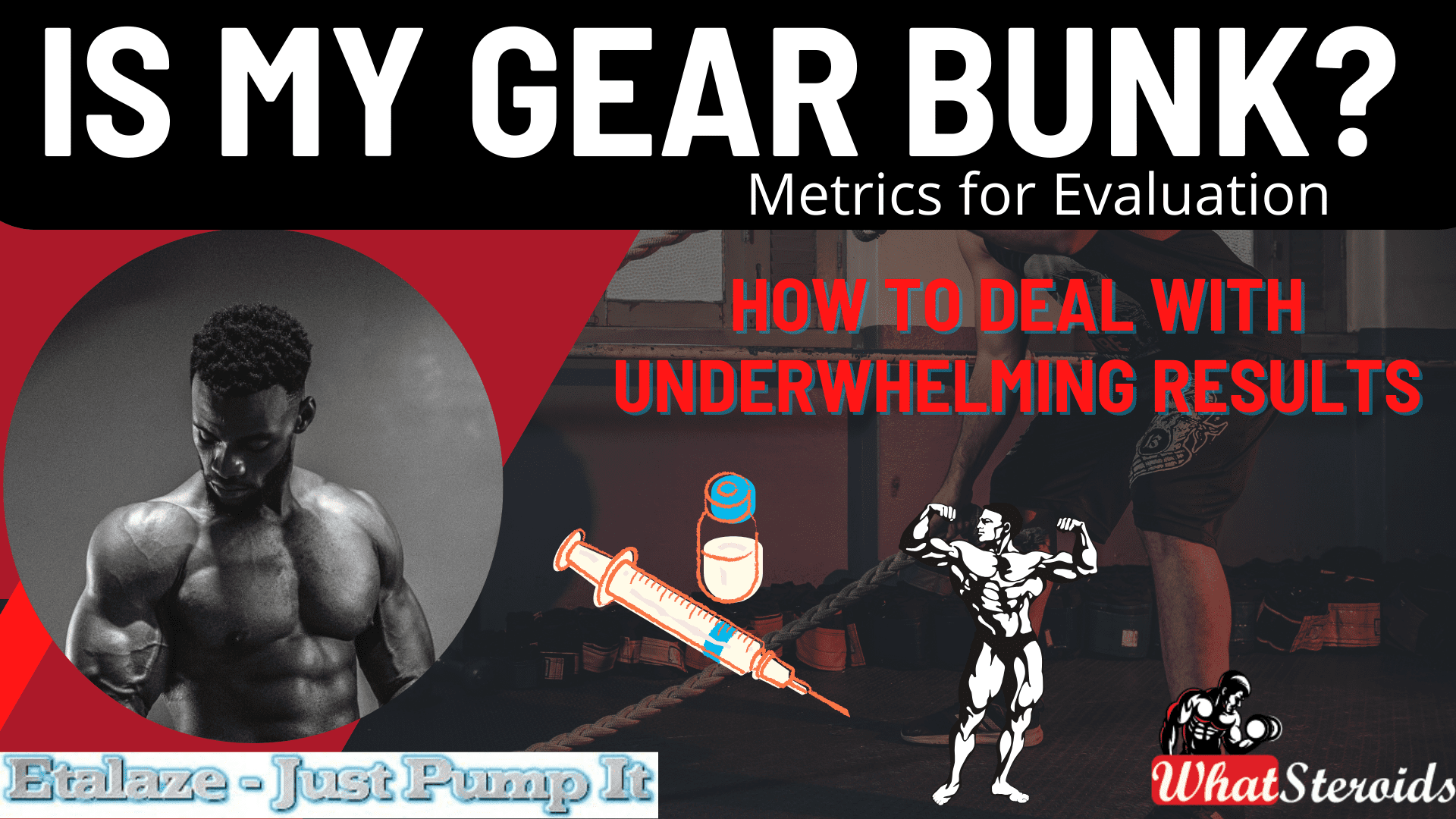
The concern about whether one’s gear is “bunk” or ineffective is indeed a common one in bodybuilding forums. When results don’t meet expectations, it’s natural to question the quality of the supplements or steroids being used.
Training and Diet
Are the training regimen and diet optimized for the goals? Consistency and intensity in workouts, along with a diet rich in protein and other nutrients, are crucial for muscle gains.
Rest and Recovery
Muscles need time to repair and grow after workouts. Adequate sleep and rest days are essential.
Realistic Expectations
It’s important to set achievable goals. Unrealistic expectations can lead to disappointment, regardless of the gear’s quality.
Proper Dosage and Cycle
Ensuring that the gear is used in the correct dosage and cycle length is important for effectiveness.
Metrics for Evaluation
Are the right metrics being used to assess progress? Muscle gains can be slow and incremental, and focusing solely on the scale might not reflect true progress.
Quality and Authenticity
Finally, if all other factors are in place, it might be worth verifying the authenticity and quality of the gear.
PEDs Awareness
Understanding the types of PEDs, their effects, and the risks involved is crucial. PEDs can range from anabolic steroids to hormone supplements like HGH1.
Injectable Hormones
Injectable hormones such as testosterone and human growth hormone (HGH) are commonly used in bodybuilding. They can lead to significant muscle growth but also come with risks such as hormonal imbalances and organ damage23.
Steroid Doses
The dosage of steroids must be carefully managed. Excessive doses can lead to severe side effects, while too little may not provide the desired muscle growth4.
Cycle Length
The duration of a steroid cycle should be planned according to individual goals and the body’s response to the steroids.
Also See: Top 10 best Immune Boosting Supplements to buy in 2024
Post-Cycle Therapy (PCT)
After a steroid cycle, PCT is essential to help the body recover and maintain the gains made.
Legal Implications
The legality of steroid use varies by country, and it’s important to be aware of the laws to avoid legal repercussions.
Ethical Considerations
The use of PEDs raises ethical questions about fairness in competition and the integrity of the sport.
Health Monitoring
Regular health check-ups are necessary to monitor the effects of PEDs on the body.
Mental Health
The psychological impact of PEDs, including dependency and body image issues, should not be overlooked.
Nutritional Support
A diet that supports the increased metabolic demands of bodybuilding and PED use is vital.
Supplement Quality
Ensuring the quality and purity of PEDs and supplements is important to avoid contaminants that could cause harm.
Training Adaptation
The training regimen may need to be adjusted when using PEDs to optimize results and minimize injuries.
Peer Influence
Be cautious of advice from fellow athletes or online forums; not all sources are reliable or have your best interests in mind.
Long-Term Consequences
Consider the potential long-term health consequences of PED use, which can include cardiovascular issues, infertility, and other endocrine disorders.
Metrics to Evaluate These Parameters
Evaluating the legitimacy and effectiveness of bodybuilding gear involves a multifaceted approach. Here are metrics that can be used to measure each of the 20 parameters above.
Training and Diet
Track workout progress, dietary adherence, and macronutrient intake.
Rest and Recovery
Monitor sleep quality and quantity, as well as muscle soreness and recovery rate.
Realistic Expectations
Set and review short-term and long-term bodybuilding goals.
Proper Dosage and Cycle
Log dosages and cycle lengths, and compare them with recommended guidelines.
Metrics for Evaluation
Use body composition analysis, such as DEXA scans or calipers, to measure fat and muscle changes.
Quality and Authenticity
Verify product labels and third-party testing for substance authenticity.
PEDs Awareness
Educate oneself on PED types and effects through credible sources.
Injectable Hormones
Blood tests to monitor hormone levels and ensure they are within safe ranges.
Steroid Doses
Record and adjust dosages based on physiological responses and side effects.
Cycle Length
Plan and document cycle durations, noting any physiological changes.
Post-Cycle Therapy (PCT)
Assess hormonal balance and recovery post-cycle with blood tests.
Legal Implications
Stay informed about local laws regarding PED use.
Ethical Considerations
Reflect on personal ethics and the impact of PED use on competitive fairness.
Health Monitoring
Regular health screenings, including liver and kidney function tests.
Mental Health
Self-assessments or professional evaluations for mental well-being.
Nutritional Support
Nutritional logs and periodic reviews with a dietitian.
Supplement Quality
Check for certifications like NSF or Informed-Choice on supplements.
Training Adaptation
Adjust training programs based on performance metrics and recovery.
Peer Influence
Critically evaluate advice from peers against scientific evidence.
Long-Term Consequences
Longitudinal health tracking to identify potential delayed effects of PED use.
Optimizing Calorie Intake: A Key Strategy to Manage Weight Effectively
When it comes to bodybuilding, one of the crucial factors that can significantly impact your progress is your calorie intake. Whether you are looking to build muscle mass, lose fat, or maintain your current weight, understanding and optimizing your calorie consumption is essential. In this article, we will explore the recommended calorie intake for bodybuilders and how it can help mitigate abnormal weight fluctuations.
Why Calorie Intake Matters for Bodybuilders
Calories are units of energy that our bodies need to function properly. For bodybuilders, caloric intake plays a vital role in achieving their fitness goals. Consuming the right amount of calories ensures that you have enough energy for workouts, muscle recovery, and overall performance.
Determining Your Calorie Needs
The recommended daily calorie intake for bodybuilders varies depending on various factors such as age, gender, weight, height, activity level, and fitness goals. To determine your specific calorie needs accurately, consider using online calculators or consulting with a nutritionist or dietitian.
Recommended Calorie Intake for Bodybuilders
As a general guideline, bodybuilders aiming to build muscle mass often follow a caloric surplus diet where they consume more calories than they burn. This surplus provides the extra energy needed for muscle growth and repair. On the other hand, those looking to lose fat may opt for a caloric deficit diet where they consume fewer calories than they burn to promote fat loss while preserving muscle mass.
Mitigating Abnormal Weight Fluctuations
To mitigate abnormal weight fluctuations as a bodybuilder, it is crucial to monitor your calorie intake consistently and adjust it based on your progress and goals. Rapid changes in weight can indicate an imbalance between calorie consumption and expenditure.
Incorporating Nutrient-Dense Foods
Apart from monitoring calorie intake, focusing on nutrient-dense foods is essential for overall health and optimal performance. Include a variety of protein sources, complex carbohydrates, healthy fats, fruits, and vegetables in your diet to ensure you meet all your nutritional requirements.
Must Read: What Anabolic Steroids Can Be Used for Joint or Ligament Injuries
Top Legit Steroid Pharmaceuticals for Bodybuilders: Where to Find Effective Gear
When it comes to bodybuilding, finding legitimate steroid pharmaceuticals that provide effective gear is crucial for achieving desired results safely and efficiently. Not all suppliers can be trusted, so it's important for bodybuilders to do their research and only purchase from reputable sources. Here are some top pharmaceutical companies known for selling high-quality, effective gear.
1. Alpha Pharma Gear Suppliers
One of the top pharmaceuticals globally, Alpha Pharma is a well-known pharmaceutical company that offers a range of steroids specifically designed for bodybuilding purposes. They are known for their quality products and have gained trust among many bodybuilders worldwide.
2. Dragon Pharma
Dragon Pharma is another popular choice among bodybuilders looking for reliable steroid products. They are known for their commitment to quality and effectiveness in helping athletes achieve their fitness goals.
3. Balkan Pharmaceuticals
It is a trusted name in the world of bodybuilding supplements, offering a variety of steroids that are known for their potency and reliability.
4. Kalpa Pharmaceuticals
This outlet is recognized for its high-quality gear that caters to the needs of bodybuilders seeking safe and effective performance-enhancing drugs.
5. Geneza Pharmaceuticals
Geneza is a reputable supplier of steroids that are widely used by bodybuilders due to their effectiveness and quality standards.When purchasing steroids from pharmaceutical companies, it's essential to ensure they are legit and follow proper guidelines for safety and authenticity. Always verify the credentials of the supplier before making a purchase, prioritize quality over price, and consult with healthcare professionals if needed.
Bonus: Etalaze Shops - Your Ultimate Online Gear Store
Looking to elevate your bodybuilding game with top-notch supplements and legit steroids? Look no further than Etalaze shop - the ultimate destination for bodybuilders seeking high-quality products at competitive prices.
At Etalaze, you'll find a wide range of legal steroids and human growth hormones to help you achieve your fitness goals effectively. With discounts and deals regularly offered, shopping online at Etalaze ensures convenience and affordability without compromising on product quality.
Whether you're a seasoned bodybuilder or just starting out on your fitness journey, Etalaze has the products to support your needs. From muscle building to cutting cycles, their selection caters to various preferences and requirements, making it a one-stop shop for all your supplement needs.
Don't settle for anything less than the best when it comes to enhancing your performance and physique. Choose Etalaze as your go-to store for legal steroids and experience the difference in quality and results that set them apart as the ultimate destination for bodybuilders worldwide.
Overall
In conclusion, navigating the world of cycles and PEDs in bodybuilding can be fraught with uncertainties. While concerns about the quality and effectiveness of gear are valid, it's crucial for pro bodybuilders to approach the situation with a combination of skepticism and proactive measures. By educating themselves on authentication methods, seeking reputable sources for gear, and prioritizing holistic approaches to training and nutrition, athletes can better manage the risks associated with potentially bunk gear.
Ultimately, by focusing on consistency, dedication, and a commitment to your cycling needs, one can overcome the setbacks we've discussed and strive for success, regardless of the challenges you may face along the way. Good luck in your cycling journey!
Related Article: The Ultimate Guide to Safe Steroid Injection
-

 Bodybuilding2 years ago
Bodybuilding2 years agoCollege Bodybuilding Competitions in the US and Europe
-

 Bodybuilding2 years ago
Bodybuilding2 years agoFootballers Who Started as Bodybuilders
-

 Bodybuilding2 years ago
Bodybuilding2 years agoOlympic Lifting : 25 Strategies That Work
-
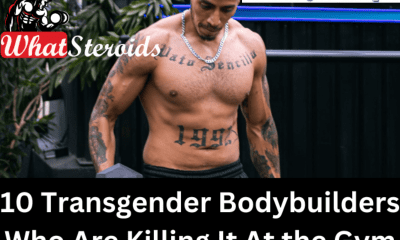
 Bodybuilding2 years ago
Bodybuilding2 years ago10 Transgender Bodybuilders Who Are Killing It At the Gym
-

 Bodybuilding2 years ago
Bodybuilding2 years agoTraining clothing: Marvel-Inspired Clothing on Amazon in 2023
-

 Bodybuilding2 years ago
Bodybuilding2 years agoNew Arrival Workout Equipment on Amazon for The Disabled
-
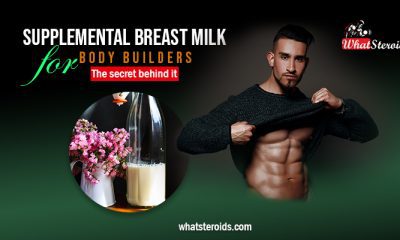
 Steroids2 years ago
Steroids2 years agoSupplemental Breast Milk for Bodybuilders: The Secret Behind It
-

 Steroids2 years ago
Steroids2 years agoDwarf Bodybuilders Giving Pros A Run for Their Money
-

 Steroids1 year ago
Steroids1 year agoVOX Testing: Why Bodybuilders Must Have It Tested Regularly
-

 Steroids11 months ago
Steroids11 months agoShavers and Other Body Grooming Equipment for Bodybuilders In 2023
-

 Steroids11 months ago
Steroids11 months agoChatGPT and Other Avenues to Find Great Bodybuilding Coaches
-

 Steroids11 months ago
Steroids11 months agoBest Oil Recommendations Before Competition for Subtle Shimmer
-
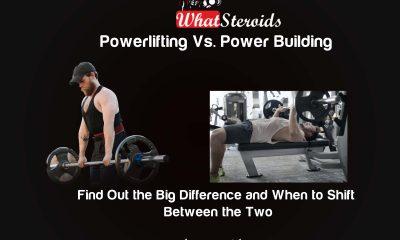
 Steroids11 months ago
Steroids11 months agoPowerlifting Vs Power Building: Find Out the Big Difference and When to Shift Between the Two
-
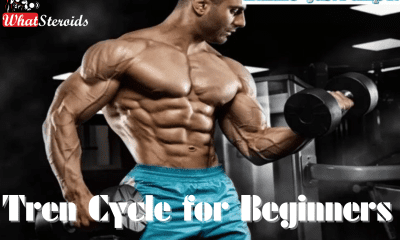
 Beginners9 months ago
Beginners9 months agoTren Cycle for Beginners
-
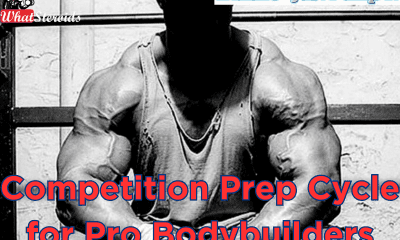
 Bodybuilding8 months ago
Bodybuilding8 months agoCompetition Prep Cycle for Pro Bodybuilders
-

 Nutrition6 months ago
Nutrition6 months agoEverything Nutritional Food: What’s Too Much Or Too Little
-

 Bodybuilding5 months ago
Bodybuilding5 months agoChia Seeds in A Bodybuilder’s Diet: An Expert’s Advice
-

 Beginners6 months ago
Beginners6 months agoCalisthenics: Secret to Building A Better Upper and Middle Body
-

 Bodybuilding4 months ago
Bodybuilding4 months agoUnique Things That Have Redefined Mr Olympia Over The Years
-

 Anabolic Steroids6 months ago
Anabolic Steroids6 months agoNatural Steroids for Bodybuilding
-

 Anabolic Steroids4 months ago
Anabolic Steroids4 months agoStart The New Year Strong With These Tips
-
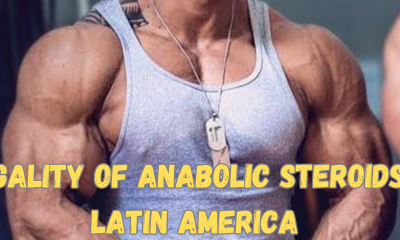
 Anabolic Steroids5 months ago
Anabolic Steroids5 months agoLegality of Anabolic Steroids In Latin America
-

 Steroids5 months ago
Steroids5 months agoThese Bodybuilding Equipment Might Become Obsolete Next Year (See Alternative Upgrades)
-

 Bodybuilding3 months ago
Bodybuilding3 months agoFunny Gym Stories and Moments to Light Up Your Day
-
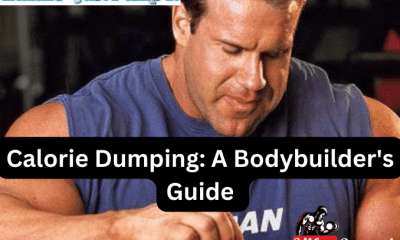
 Bodybuilding5 months ago
Bodybuilding5 months agoCalorie Dumping: A Bodybuilder’s Guide

